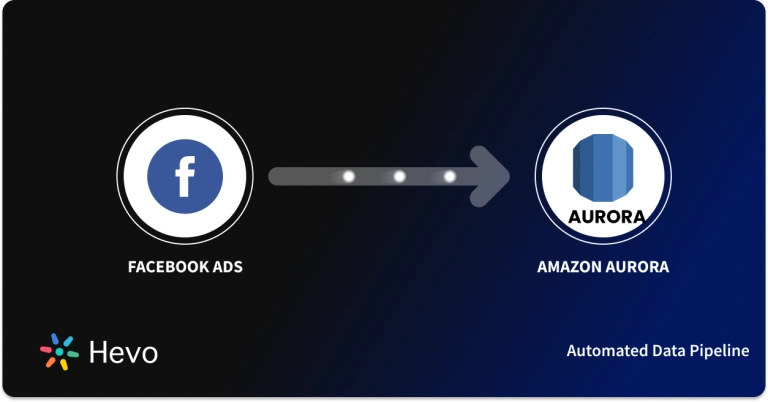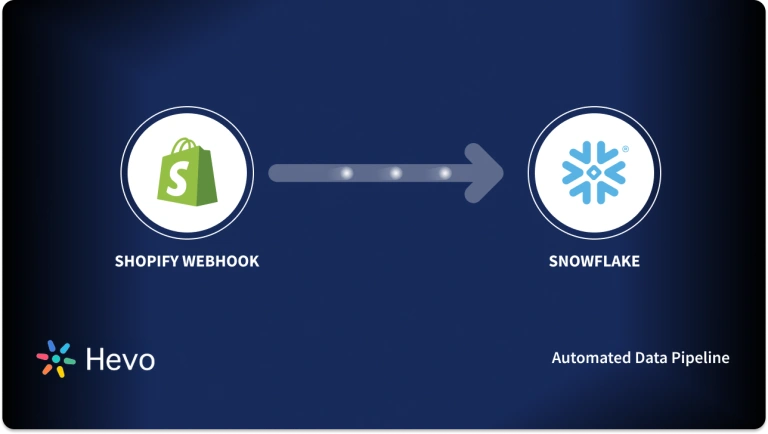Webhooks are used for collecting event data from various web, mobile, e-commerce, or SaaS applications. Connecting Webhooks to Amazon Aurora can help you unlock the full potential of your data and achieve meaningful insights into your business operations. By integrating these two platforms, you can create a centralized repository that enables real time analytics. This empowers you to make data-driven decisions on personalized user experiences, targeted marketing campaigns, and optimizing website performance to enhance business outcomes.
This article will assist you in finding a quick solution to build seamless data pipelines. It will walk you through two different methods. Regardless of the approach you choose, this article provides a detailed guide on how to seamlessly connect Webhooks and Aurora. By following the step-by-step instructions, you can effortlessly empower your data-driven business operations within a short span. Let’s get started.
Looking for the best ETL tools to connect your webhooks? Rest assured, Hevo’s no-code platform helps streamline your ETL process. Try Hevo and equip your team to:
- Utilize drag-and-drop and custom Python script features to transform your data.
- Integrate data from 150+ sources(60+ free sources).
Try Hevo and discover why 2000+ customers have chosen Hevo over tools like AWS DMS to upgrade to a modern data stack.
Get Started with Hevo for FreeTable of Contents
Methods to Connect Webhooks to Amazon Aurora
Method 1: Load Data from Webhooks to Amazon Aurora using Lambda
Lambda is a serverless compute service offered by AWS that allows you to run code without provisioning or managing servers. With Lambda, you can write functions in popular programming languages like Node.js, Python, Java, C#, Go, and Ruby. These functions can be designed to perform specific tasks in response to triggers or events. Whether it’s HTTP requests through API Gateway or scheduled tasks, Lambda functions can be triggered by various events. This allows you to execute your code automatically.
To integrate AWS Lambda with a Webhook and Amazon Aurora, you can follow these steps:
Step 1: Set up an Amazon Aurora Database
- Create and configure Amazon Aurora as the database engine.
Step 2: Create an AWS Lambda Function
- Log in to AWS Management Console and navigate to AWS Lambda.
- Open the Function page of the Lambda console and click on Create function.
- Choose the appropriate authoring option:
- Author from scratch allows you to write your own code from scratch.
- Use a blueprint provides preconfigured templates for common use cases.
- Browse serverless app repository allows you to use prebuilt serverless applications.
- Configure the function details, specifically the Webhook that will invoke the Lambda function:
- Enter a unique name for your function.
- Choose the runtime environment for your function from the available programming languages.
- Select the execution role that defines the permissions for your function.
- Configure the function’s triggers:
- Select the trigger type that will invoke your Lambda function.
- Set up the specific trigger details, such as the event source and any associated configuration settings.
Step 3: Write the Function Code to Handle the Webhook Event
- In the code editor, write your function code to extract data from the Webhook using the chosen runtime language.
- Clean data as required and format it for insertion into the Aurora database.
- Use the appropriate AWS SDK to establish a connection to the Aurora database.
- Execute the necessary SQL statements to insert or update the data in the Aurora database.
- Once you’re done writing code, click on Create function.
Step 4: Configure the Lambda function to Access Aurora Database:
- Ensure that the Lambda function has the necessary permissions to interact with the Aurora database.
- Create an IAM role that allows the Lambda function to access the database.
- Attach the appropriate policies to the IAM role.
Step 5: Test and Deploy Lambda Function
- Use the test console in the AWS Lambda service to test the Lambda function using sample Webhook events and ensure that it properly replicates the data. Select Configure Test Event from the drop-down menu called Test. This allows you to execute the function with sample event data.
- After testing, enable the error handling and logging mechanisms in the Lambda function to capture errors during the data processing or database operations.
By following these in-detail steps, you can achieve Webhooks Amazon Aurora data migration. The Lambda function connects Webhook data to the Aurora database, allowing you to process and store the data in a structured way.
While using custom scripts to execute Lambda functions can be laborious and time-consuming, it is particularly well-suited for:
- Customization: Using custom scripts, you’ve full flexibility to tailor the data replication process. You can modify the scripts for specific requirements like data transformation, filtering, and mapping before storing data in Amazon Aurora.
- Real Time Data Replication: AWS Lambda function can be triggered in real time through Webhook events, ensuring immediate data replication to Aurora for up-to-date analysis.
Limitations of Using Custom Scripts to Load Data from Webhooks to Amazon Aurora
While custom scripts offer several benefits for data replication, it has the following limitations:
- Execution Duration: AWS Lambda has a maximum execution duration limit, which is currently set to 15 minutes per function. If your function requires a longer execution time, you may need to split the task into smaller functions or consider alternative computing options.
- Development Complexity: Developing and maintaining custom scripts requires programming expertise. It may involve additional time and effort to write, test, and troubleshoot the code, especially for complex data replication scenarios.
Method 2: Using a No-Code Tool for Webhooks to Amazon Aurora Integration
Hevo Data is a robust data replication platform that enables you to seamlessly collect, transform, and load data from multiple sources into preferred destinations. With an intuitive user interface and no-code approach, Hevo streamlines the process of data replication, eliminating the need for complex coding.
The platform supports a wide range of data sources, including databases, events streams, and cloud applications. It offers both batch and real time data replication, ensuring that data is always up-to-date and available for analysis.
Hevo also prioritizes data accuracy and reliability, offering features like data transformation, schema validation, pipeline monitoring, and error handling. By ensuring efficient data processing, Hevo empowers you to make informed decisions and unlock valuable insights from your data.
Now, let’s explore the essential steps involved in integrating Webhooks and Amazon Aurora using the Hevo platform:
Step 1: Log into your Hevo account and configure your source data, i.e., Webhooks, as shown in the below image. You can also learn about how to create Webhook Pipeline.
Step 2: Connect to your Amazon Arora account and start moving your data from Webhooks to Aurora. Provide the connection settings for the Amazon Aurora database and test your connection.
You’re done! This two-step process will successfully establish Webhooks Amazon Aurora ETL in a matter of minutes.
Explore the compelling factors that make the Hevo Data platform an ideal choice for fulfilling your data replication requirements:
- Extensive Ecosystem Integration: Hevo integrates seamlessly with multiple analytics and data storage platforms. It enables you to connect and load data into popular BI tools, data warehouses, data lakes, allowing you to leverage your preferred analytics stack.
- Flexible Data Replication Options: Hevo offers versatile data replication options to suit diverse data integration requirements. You can choose to replicate entire databases, specific tables, or even individual columns.
- Drag and Drop Data Transformation: Hevo provides a user-friendly drag-and-drop interface with preloaded transformations for quick data formatting. Alternatively, you can use Hevo’s Python interface for custom data transformation. The platform also supports postload transformations once data is loaded into the destination.
- Data Deduplication: Hevo performs data deduplication while loading data into a database based on primary keys defined in the tables. In cases where the primary key is not defined, the data is directly appended.
- Excellent Customer Support: Hevo provides dedicated customer support round the clock to assist you throughout your data replication journey.
What can you Achieve with Webhooks and Amazon Aurora Migration?
Webhooks and Amazon Aurora integration can provide several benefits and enable various use cases:
- Deeper Customer Insights: With data replication, you can bring data from various Webhooks and consolidate it in a centralized relational database like Aurora. This will give you a unified view of customer data and uncover deeper insights and analysis.
- Understand Your Team Better: A Webhook Aurora integration helps you to gain deeper insights into team activities and performance. For instance, you can set Webhooks to collect event data from project management applications to track actions and analyze the team’s performance. This helps you identify bottlenecks, optimize workflow, and improve overall productivity.
- Understand your Customers Better: By consolidating data in Aurora, you can analyze customer preferences, purchasing patterns, and engagement metrics. This helps understand customer needs, identify trends, and customize your products or services to meet those requirements.
Conclusion
The aforementioned methods can seamlessly perform Aurora Webhooks integration and help you achieve better analysis.
The first method describes how you can use AWS Lambda and custom scripts to connect Webhook with Aurora. Although this method can be used to achieve real time data integration requirements, it requires timely development and maintenance efforts.
However, with Hevo’s in-built connectors, you can automate the data extraction and replication from Webhooks to Amazon Aurora tables in just two steps. Furthermore, its real time support will fetch updated data and instantly reflect it in your Aurora table without writing extensive code. This makes Hevo Data an effective solution than a custom script approach.
Want to take Hevo for a spin? SIGN UP for a 14-day free trial and simplify your data integration process. Check out the pricing details to understand which plan fulfills all your business needs.
FAQ on Webhooks to Amazon Aurora
Does AWS support webhooks?
Yes, AWS offers the services and functions to adopt and handle the webhooks. To be more specific, AWS API Gateway and AWS Lambda are normally used in tandem to create and handle the webhooks.
What is the difference between API and webhook?
API stands for Application Programming Interface. It is responsible for defining the set of rules and protocols to be followed to ensure interaction between the different software applications. Through this, with well-defined endpoints, request methods like GET and POST, and data formats of JSON and XML, a way has always been there to interact with the external systems programmatically.
How to create a webhook in AWS?
The process to create an AWS webhook using AWS API Gateway and AWS Lambda is outlined below:
1. Create an API Gateway API: Define an API Gateway API and set up a POST method or the HTTP method that your webhook uses.
2. Integrate with a Lambda Function: Associate a method of the API Gateway with a Lambda function. The Lambda function would encapsulate the webhook logic for execution once the webhook is invoked.
3. Deploy the API: Deploy the API to a stage, for example, production or development, to get a URL endpoint that is able to receive incoming webhook requests.
4. Setup Webhook Endpoint: Use the URL of the deployed webhook from the API endpoint as a webhook URL in the application or service that will trigger the webhook.








